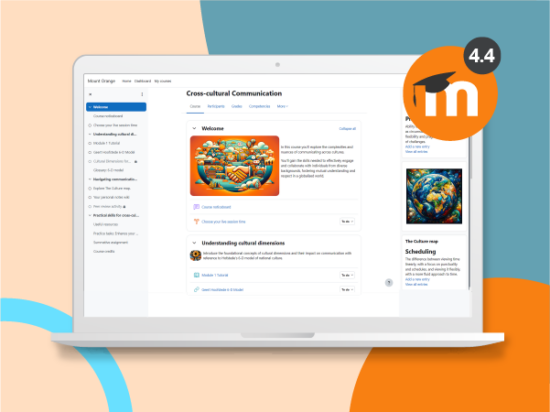There is much in the public domain about the projected growth of the online learning or e-learning market globally. Across both the education and workplace learning sectors, there has been a significant adoption of online learning over the last decade and increased understanding of the benefits a Virtual Learning Environment (VLE) can provide in learning retention rates, learner engagement and efficiency in delivery. The pandemic has only accelerated this pace of adoption and many organisations and education institutions now recognise that success is much more than simply having a VLE (also termed a learning management system, LMS or e-learning platform), but that “the challenge lies in how the platform is being used, rather than the technology itself”.
Jisc, a United Kingdom not-for-profit company whose role is to champion the importance and potential of digital technologies and research for the higher, further education and skills sectors, has highlighted in the VLE Review Report 2020 that barriers to success are often connected to people, practice or culture. Based on a qualitative study with over 600 academic staff, professional services staff and learners, the report provides 3 themes or recommendations on how to get the most from a VLE.
What is a VLE?
A Virtual Learning Environment (VLE) is a web-based software platform or space for teaching and learning. The term can be synonymously used with online learning systems, online learning platforms, learning management systems, LMS or e-learning platforms and describes spaces that contain courses where educators create and arrange resources, activities and both formative and summative assessments into a rich learning experience. It is also a space where enrolled learners interact and work with each other to achieve the learning goals of a course.
Barriers and challenges
The Jisc report highlighted that most staff within learning institutions were willing to commit to working with a VLE but that barriers and challenges with engagement related to a lack of familiarity or confidence with the platform itself. This is exacerbated by a lack of time needed to learn how to effectively use the platform – either to attend training or embark on a journey of self discovery. Consequently, learners were unanimous in expressing their frustration with inconsistent experiences when using a VLE due to variations in confidence and motivation of teaching or professional staff. Learners also expressed that they wanted to be able to use the VLE to communicate and provide feedback with staff as well as their peers.
The end result is that many organisations or institutions feel that their platform is inadequate, but in fact the barriers to success are often connected to people, practice or culture.
How to get the most from a VLE
Through a consultative VLE Review process that assesses the current state and perception of existing VLE’s with academic, professional services staff and learners/students, the Jisc report identified common themes as to how to get the most from a VLE.
Gain endorsement of the vision and strategy
-
- Set up a working group including key members of the senior management team of your organisation or institution to identify key challenges and barriers with the VLE.
- Develop a vision that takes into the account the role of the VLE – enhancing the digital experience for learners and designing learning and assessment in the digital age.
- Engage students and staff in vision development.
- Agree a strategy that sets goals for success and how they can be measured by educators, professional staff and learners.
- Use analytics to inform your future planning
Support staff development and quality standards
-
- Promote examples of good practice to educators and professional staff.
- Share evidence of good practice across departments.
- Develop champions of good practice.
- Increase the focus on good VLE practice at staff development or training days.
- Develop quality standards.
- Include VLE usage in staff development appraisals.
- Link to jurisdiction curriculum guidelines and standards.
- Provide staff access to a “sandbox” or testing environment.
- Define accessibility standards.
- Create templates and best practice standards.
- Create “walkthrough” support materials.
Develop a policy around the use of technologies
-
- Define what is in and out of scope.
- Take a supportive and responsive approach.
- Assign owners to audit out of date resources and manage content.
Learn more about the VLE Review Report 2020, or contact one of Moodle’s Certified Service Providers who can work with you to transform the Moodle platform into a solution that meets the unique needs of your organisation or institution.



